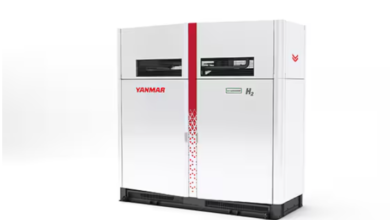Green hydrogen making inroads in the paper industry
Essity spearhead green hydrogen for making CO2-free tissue paper.

Essity (hygiene and health company) is launching a pilot project to run a paper machine CO2-free with green hydrogen at its production facility in Mainz-Kostheim, Germany.
Essity will replace natural gas with green hydrogen during ongoing production on the site’s largest paper machine. The project is the first of this magnitude in the paper industry. The investment in the pilot project amounts to € 4 million.
The project will test the extent to which green hydrogen can replace natural gas in the tissue production process without compromising the high product quality. Following the necessary installations and the re-build of the paper machine, Essity will gradually add green hydrogen to its energy supply. It is planned to run the drying hood of the paper machine on 100% green hydrogen by autumn 2022.
Magnus Groth, President and CEO, Essity, said, “We will be the first in the world to use green hydrogen for tissue production.”
H2 Bulletin understands that other papers and packaging companies have also been working on hydrogen-related developments. Lucart, one of the top European manufacturers of paper and tissue products, plans to start a new cogeneration plant in 2021 to produce energy and heat at its Porcari plant, with gas turbines already set up to run on the most modern fuels, including hydrogen and biomethane.
At the end of 2020, Smurfit Kappa (Europe’s leading corrugated packaging company) announced participating in an innovative energy research project on renewable energy storage called Hyflexpower project. Smurfit Kappa’s Saillat Paper Mill in France was set to be the first plant to introduce an integrated hydrogen gas turbine demonstrator, providing that renewable hydrogen can serve as a flexible means of storing energy which can then be used to power a high-power industrial turbine. The project participants included Arttic, Centrax, German Aerospace Center (DLR), Engie Solutions, Siemens and Universities of Athens, Lund, Duisburg-Essen and UCL London.
There have been experiments to convert organic pollutants in the wastewater of a pulp and paper mill into biohydrogen gas. In MultiBio, a project funded by Sweden’s innovation agency Vinnova and the paper industry, researchers are investigating the potential to produce biohydrogen as part of the mills’ water purification process.
